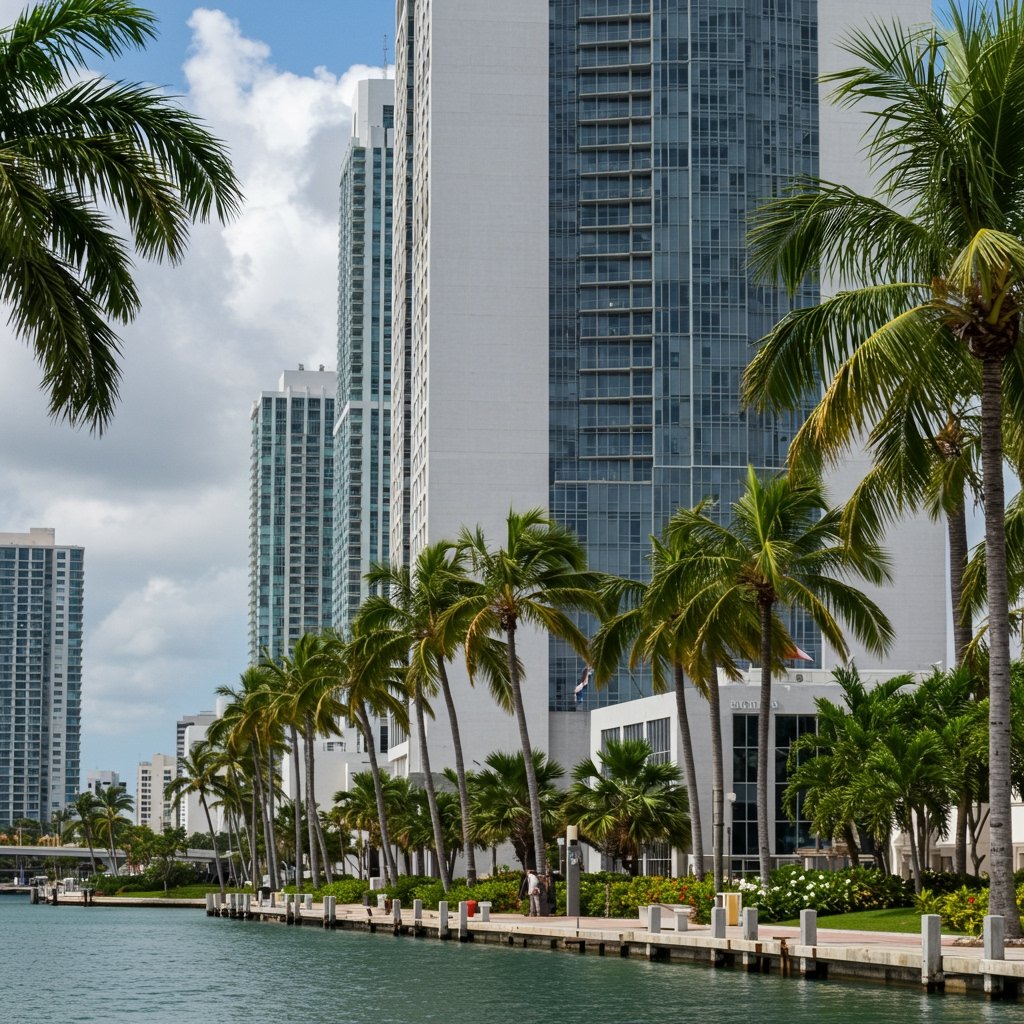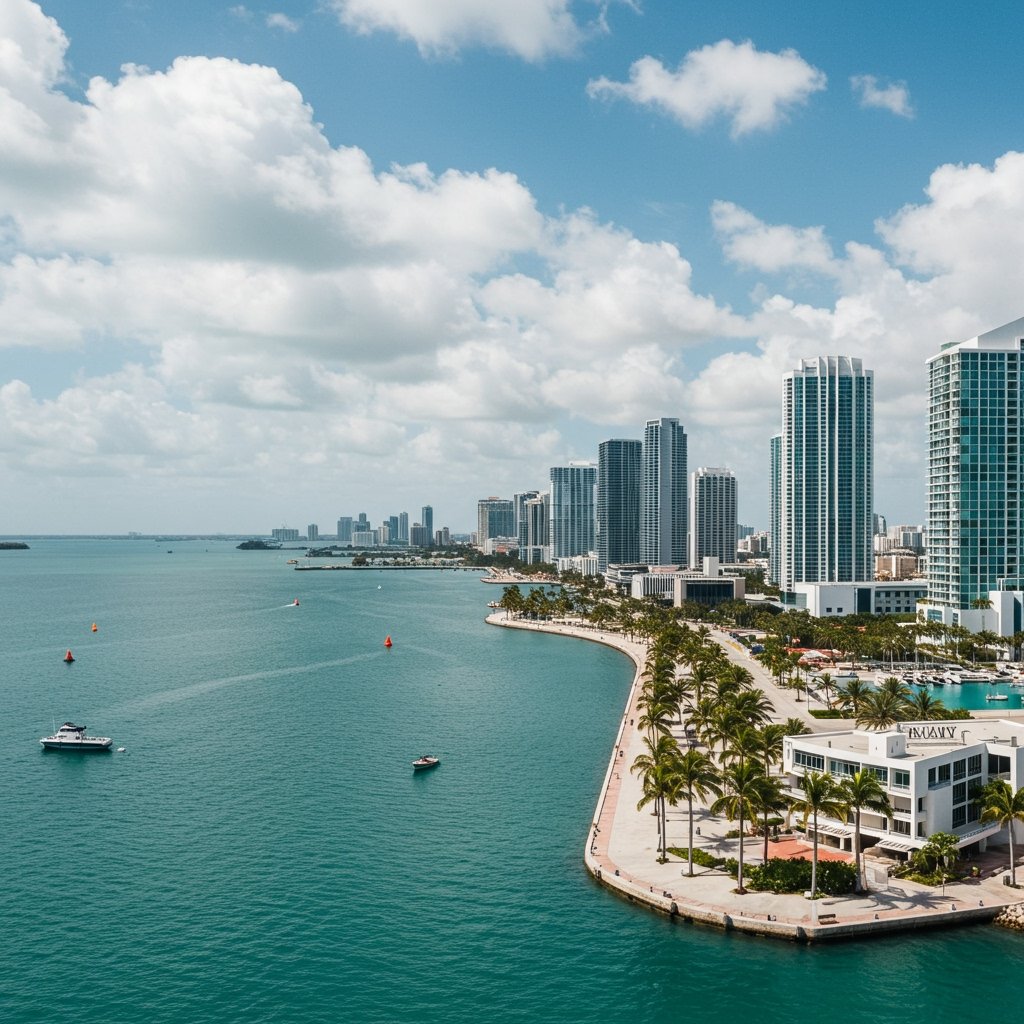A City Divided: Editorial Boards Grapple with Miami’s Coastal Future

A contentious battle is unfolding within Miami’s media landscape, reflecting deep divisions across the city regarding a proposed massive coastal development project. Slated for the downtown core, this ambitious plan seeks to transform several blocks of prime waterfront real estate, promising significant economic revitalization but also raising alarm bells among community advocates and some residents. As the City Commission reviews the proposal with a pivotal vote anticipated later this week, editorial boards from various Miami publications have weighed in, presenting strong and often diverging opinions that underscore the complexity and high stakes of the debate.
The project, described as one of the most significant development initiatives proposed for downtown Miami in recent years, envisions a dramatic reshaping of the coastal skyline and adjacent areas. While specific details regarding building heights, total square footage, and exact land use mix are central to the ongoing review process, the general scope is understood to be substantial, involving a mix of residential, commercial, and potentially public spaces. Proponents argue that the development is crucial for Miami’s continued growth, necessary to attract investment, create jobs, and generate substantial new tax revenue streams that could benefit the entire city.
The Core of the Conflict: Density, Traffic, and Displacement Fears
Despite the potential economic upside touted by supporters, the project has ignited fierce opposition rooted in long-standing concerns about development patterns in Miami. Among the most prominent points of contention are the proposed density levels. Critics argue that the sheer scale of the development will overwhelm existing infrastructure and fundamentally alter the character of the downtown area. Miami has experienced rapid population growth and construction boom in recent decades, and many residents feel that the city’s infrastructure, particularly its transportation network, has not kept pace.
This brings us to the second major point of opposition: traffic congestion. Miami is already notorious for its challenging traffic conditions. Opponents of the coastal development plan argue that adding potentially thousands of new residents and employees, along with increased commercial activity, will exacerbate gridlock to an unbearable degree. They question whether the project includes adequate provisions for transportation infrastructure improvements or promotes transit-oriented development sufficiently to mitigate its impact on the city’s roads.
A third, and perhaps most sensitive, concern revolves around the potential for gentrification and community displacement. While the specific blocks targeted for development in the downtown core may not house a large residential population currently, opponents worry about the ripple effects. They argue that the influx of high-value development could raise surrounding property values and rents, pricing out existing businesses and residents in nearby neighborhoods. This risk of altering the socio-economic fabric of the area and displacing long-standing communities is a significant point of criticism raised by those advocating for more equitable development practices.
Finally, critics point to broader issues of insufficient infrastructure planning. Beyond traffic, they question whether the city’s water, sewer, and power systems are prepared to handle the demands of such a massive development. Concerns about public services, open space preservation, and ensuring adequate public access to the valuable coastal areas being developed are also frequently voiced.
Editorial Boards Offer Starkly Different Perspectives
The intensity of this debate is clearly reflected in the editorial pages of Miami’s major publications. The range of opinions highlights the diverse perspectives within the city on balancing ambition with responsibility.
Some editorial boards have approached the proposal with cautious optimism, emphasizing the potential for economic benefits. These editorials often focus on the significant investment the project represents, the jobs it could create during construction and operation, and the long-term boost to the city’s tax base. They may argue that smart, well-planned growth is essential for Miami to remain competitive and prosperous. While acknowledging the legitimate concerns about density and traffic, these editorials might suggest that the benefits outweigh the challenges, provided certain conditions or mitigation measures are included in the final plan. They tend to view the development as a necessary step in the evolution of downtown Miami into a vibrant, 24/7 urban center.
In contrast, other editorial boards have issued sharp criticism of the plan. These pieces often foreground the potential negative impacts on the community and the environment. They may express skepticism about the adequacy of the infrastructure planning and question whether the city is prioritizing developer interests over resident well-being. Editorials critical of the project frequently highlight the risks of gentrification and displacement, arguing that the city has a moral obligation to ensure development benefits all residents, not just a select few. They might call for a more measured approach to growth, demanding stronger guarantees regarding affordable housing, traffic mitigation, and preservation of public spaces. These critical voices often represent a perspective that prioritizes community character, historical preservation (if applicable to the specific blocks), and equitable outcomes over rapid, large-scale development.
The City Commission’s Crucial Decision This Week
The diverse and often conflicting opinions expressed in the editorials serve as a public sounding board for the complex issues facing the City Commission. The commissioners are tasked with reviewing the intricate details of the proposal, considering public feedback (including the sentiments articulated by the editorial boards), and ultimately making a decision that will shape a significant portion of the city’s downtown core for decades to come. The fact that a key vote is anticipated this week adds urgency to the debate and puts the commissioners under intense scrutiny.
The decision is not merely about approving or rejecting a building plan; it is fundamentally about the direction Miami will take. It forces a confrontation with critical questions: How much growth can the city absorb? Who benefits from this growth? Can Miami develop its prime coastal areas without sacrificing quality of life or displacing communities? The editorial debate, therefore, is a microcosm of the larger struggle within Miami to find a sustainable path that balances economic aspirations with social responsibility and environmental stewardship.
Regardless of the outcome of the upcoming vote, the vigorous public discourse, amplified by the editorial boards, highlights the deep divisions that exist regarding the city’s future development path. It underscores the challenges of managing rapid urban expansion in a way that is both prosperous and equitable for all of Miami’s residents.





